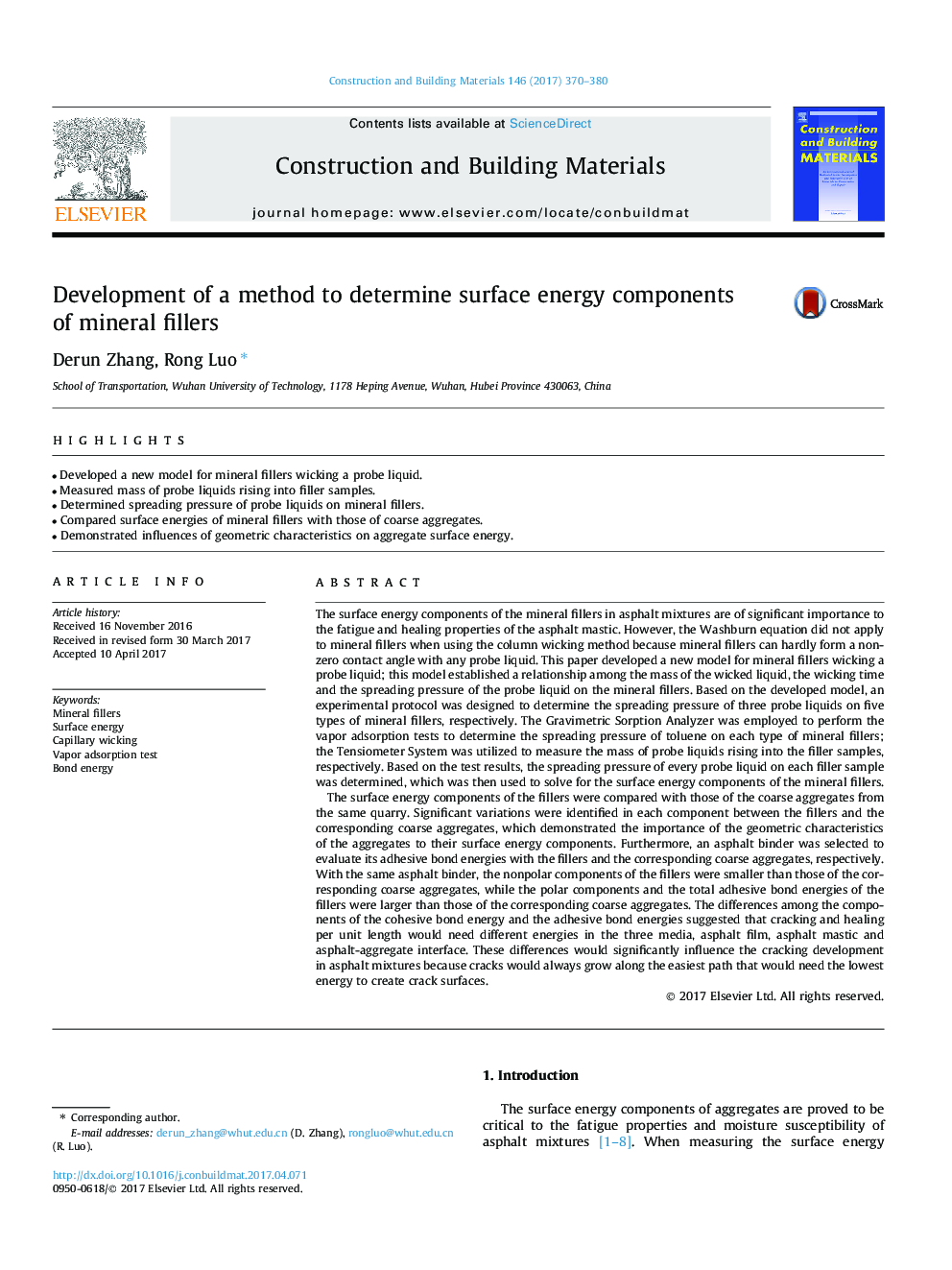| Article ID | Journal | Published Year | Pages | File Type |
|---|---|---|---|---|
| 4913312 | Construction and Building Materials | 2017 | 11 Pages |
Abstract
The surface energy components of the fillers were compared with those of the coarse aggregates from the same quarry. Significant variations were identified in each component between the fillers and the corresponding coarse aggregates, which demonstrated the importance of the geometric characteristics of the aggregates to their surface energy components. Furthermore, an asphalt binder was selected to evaluate its adhesive bond energies with the fillers and the corresponding coarse aggregates, respectively. With the same asphalt binder, the nonpolar components of the fillers were smaller than those of the corresponding coarse aggregates, while the polar components and the total adhesive bond energies of the fillers were larger than those of the corresponding coarse aggregates. The differences among the components of the cohesive bond energy and the adhesive bond energies suggested that cracking and healing per unit length would need different energies in the three media, asphalt film, asphalt mastic and asphalt-aggregate interface. These differences would significantly influence the cracking development in asphalt mixtures because cracks would always grow along the easiest path that would need the lowest energy to create crack surfaces.
Related Topics
Physical Sciences and Engineering
Engineering
Civil and Structural Engineering
Authors
Derun Zhang, Rong Luo,
